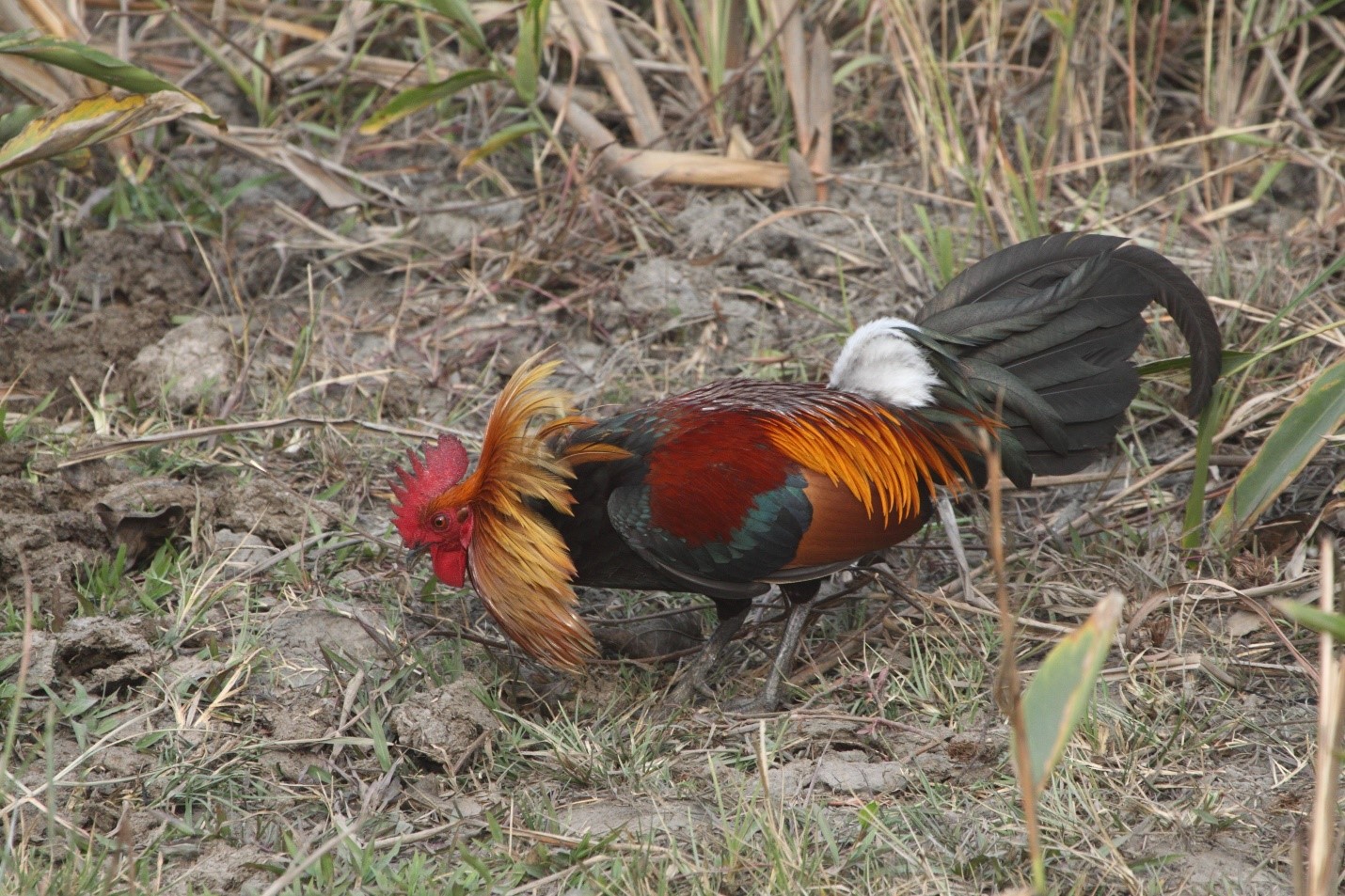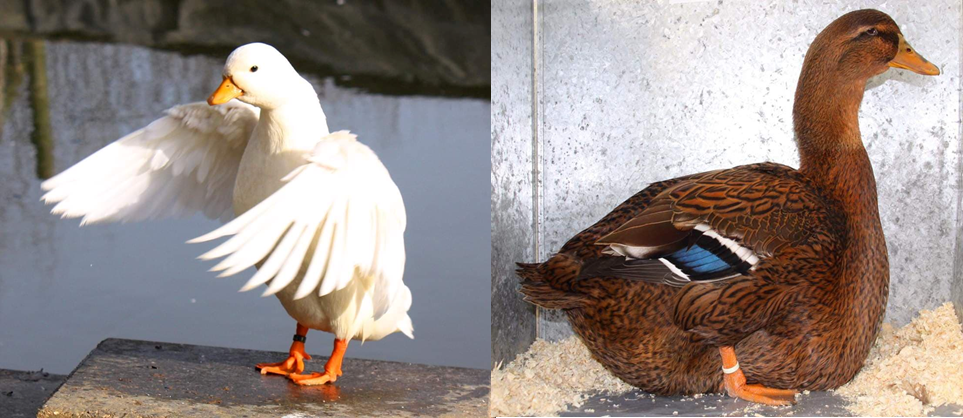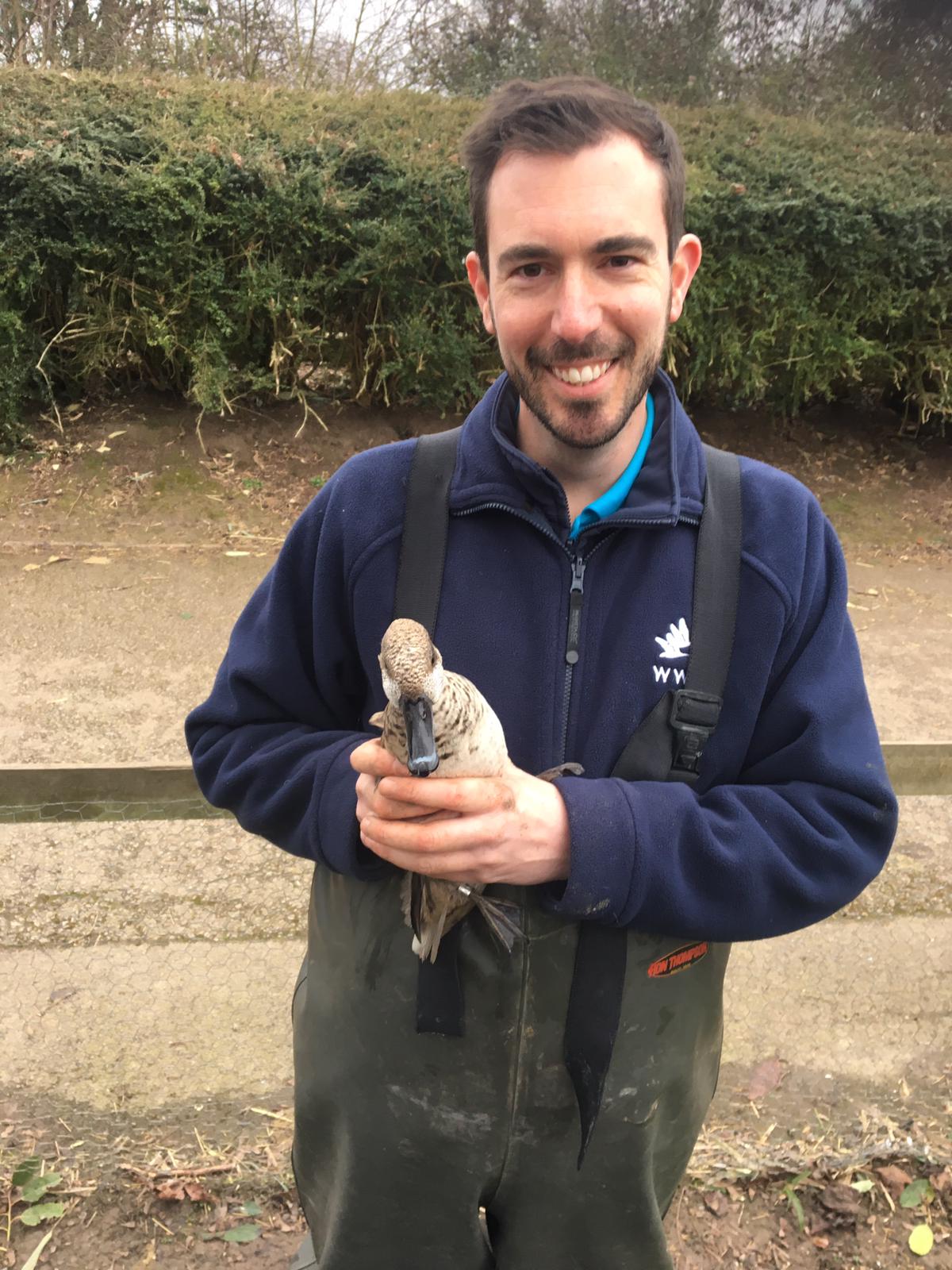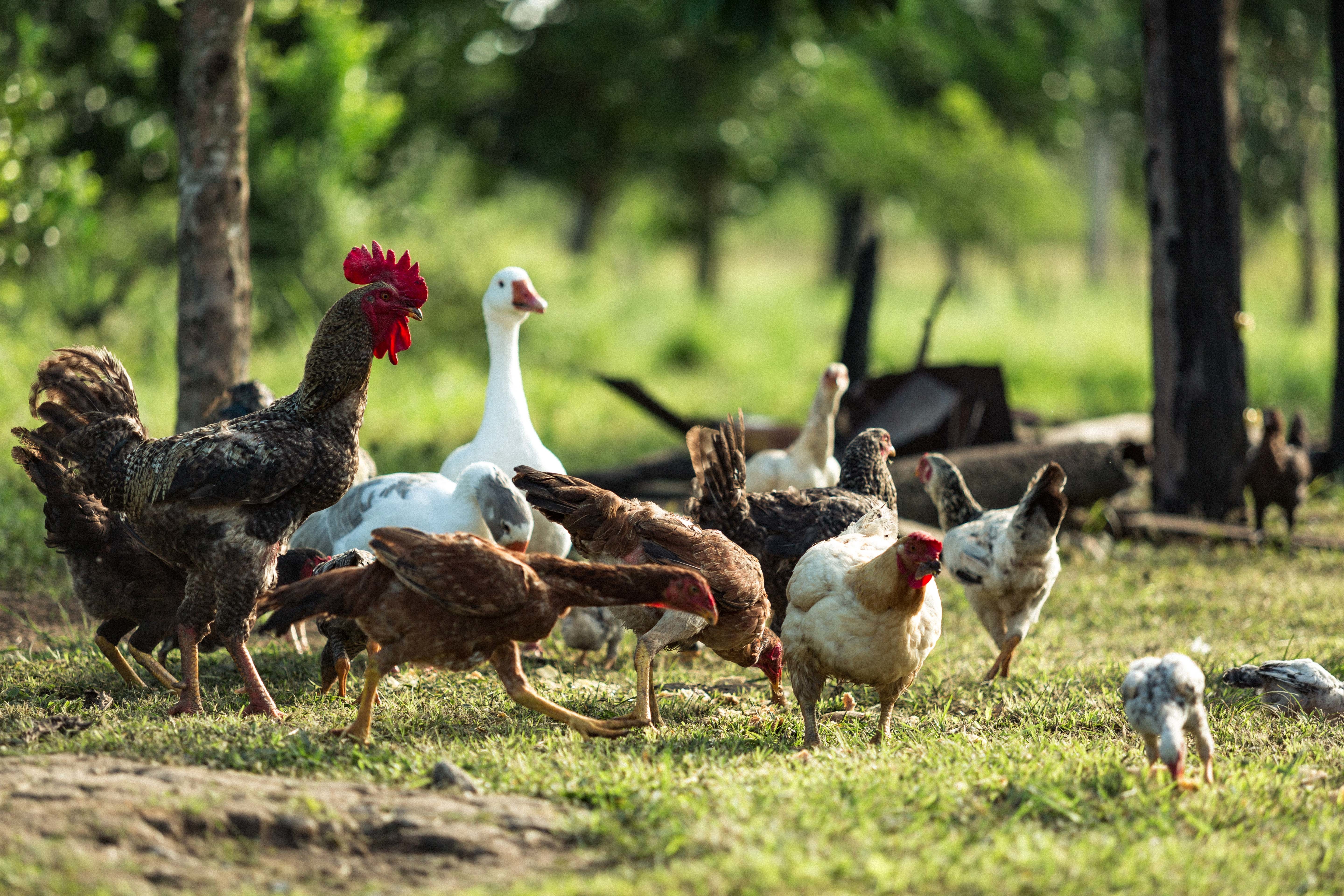



Ancestral wisdom: flock management
Relating your birds’ daily habits and practices to their evolutionary past can reveal their natural patterns of behaviour – and provide important lessons for keeping them healthy and happy.Part of Series:
< Previous Article in Series
Back-garden chicken and duck keeping is becoming increasingly popular in the UK, with recent estimates suggesting 600,000 plus people have hens as pets at home (making them more popular than some traditional furry friends like hamsters and guinea pigs). Keeping chickens and other poultry happy and healthy at home can be relatively easy; the familiarity of birds to their owners means problems can be quickly spotted and rectified.
Good housing and husbandry are key: providing the right resources (food, shelter, environmental enrichment, social grouping) safeguards good health by reducing stress. To be sure that these resources are properly in place and that your birds are stress free, an understanding of the ancestry of these domesticated birds is indispensable. It means you’ll be assured that your birds are being given environments that allow them to perform important behaviours that lead to good physical and psychological health.
In this first of two articles, the natural behaviour patterns of these animals will be explored and, ultimately, by learning more about their wild ancestry, how to ensure they experience a good quality of life.
Individuals in populations matter. How we understand their behaviour tells us about their health and wellbeing – and, therefore, how they are likely to influence the behaviour, health or wellbeing of the animals around them. In large flocks of commercial poultry, it may be very difficult to determine individual behaviour patterns, but on a smaller scale, keepers will know their animals as individuals. Sudden changes to apparent “normal” personality characteristics or demeanours will be indicative of something not being quite right with a particular bird. Experienced keepers will know that birds can be very good at hiding indications of ill health and will may only show signs of disease when they are gravely ill. Daily checks on the external condition of birds will give a good “heads up” of how an individual is faring and comparing day-on-day records means individual benchmarks can be used for judging health.

The wild ancestor of domestic fowl, the red junglefowl, in its natural habitat demonstrating a threatening behaviour. Chickens have a defined hierarchy in a flock, and when a bird can no longer maintain their place within the “pecking order” it may be a sign of poor health or condition.
A well-studied example from the literature (especially that concerning chickens) of a stimulus that results in welfare- and health-positive behaviour is the provision of perches. Some birds have a keen desire to perch (not just in chickens). Muscovy ducks are a species of “perching duck” and have a natural tendency to sit off the ground. Restricting this behaviour is therefore not good for the wellbeing of the animal when housed in a managed situation.
Inappropriate substrates and a lack of available perching will result in poor foot condition (pododermatitis, commonly known as bumblefoot), especially in breeds that derive from ancestral species that would spend a good deal of time off the ground. In both chickens and ducks, chronic lameness and systemic bacterial infections can result from pathological changes to the foot caused by pressure sores, and therefore it is important to monitor activity, weight bearing and stance, eg, too much time spent on one foot, to quickly spot the onset of bumblefoot before it may turn into something more serious.
The weight of domestic broiler chickens has changed since the end of the Second World War from an average of 900g in the 1950s to 4.2kg by 2010; this added load can also exacerbate health problems. Sores on a bird’s feet, hocks and sternum can be common due to a sedentary lifestyle and impaired movement. Heavy waterfowl, such as Rouen and Aylesbury ducks can be especially prone to pathological changes to the foot’s integrity due to to size and weight.
Lighter breeds, such as Call ducks, which can still fly, may need feather trimming to be kept within the confines of their enclosure. This husbandry technique needs to be performed correctly and care should be taken to not panic such birds as their natural stress response would be to spring into the air. Injury can be caused when feather-clipped birds try to take-off if spooked while on a hard or unyielding surface. It is important to understand the flight responses of species when determining best management practices and housing design.

White Call duck (left), weighing in around 600g, and a Rouen duck (right) that can tip the scales at over 5kg. Call ducks retain mainly wild characteristics and can fly, posing different behavioural demands on their owners compared to keepers of more sedentary, quieter Rouens © Jed Dwight
An important element of the domestication process is the selection for reduced fearfulness. However, breeds of chicken or duck that retain more “wild type” characteristics (ie that more closely resemble the behaviour patterns of the red junglefowl or mallard) can be more fearful of humans and have a shorter flight distance than breeds that have experienced more intense periods of selection. There are features of poultry breeds that can tell us about their propensity to suffer compromised welfare. Plumage condition has been shown to be a reliable indicator of fearfulness and stress in chickens; hens in perfect feather condition are more resilient to stress compared to those with poorer feather condition.
Another interesting side-effect of domestication is that it has altered the time that certain breeds of chicken will spend foraging and socialising. Research on red junglefowl, Swedish Bantams and White Leghorn Hy-Lines demonstrated that the more selected the breed, the less time the birds spend on social behaviour and on foraging. A reduction in time spent on behaviours of high energetic cost needs to be considered when looking at the causes of health problems: less active individuals that come from breeds that are selected to be more inactive may present with more foot and leg problems as they age, for example. Such breeds may interact less with stimuli around them and therefore might require more specialised care.
By understanding the normal behaviour patterns of chickens and ducks, wherever they are kept, and grasping their internal motivations to perform specific behaviours, husbandry regimes will promote good welfare states that buffer birds against stress and therefore improve health and fitness. The eminent animal welfare scientist Professor Ian Duncan expanded on the behavioural needs of domestic poultry and their links to good welfare in a paper from 1998. In it, Duncan explained that perching positively impacts on a bird’s legs and wings, which become stronger and show an increase in bone density when they are allowed to perch naturally. Perching increases a chicken’s rate of wing flapping, which provides exercise and again, at a physiological level, improves musculature and skeletal condition. As ducks show an inherent desire to swim, then, so chickens have an inherent desire to perch. Both behaviours promote good health and bird welfare. And both are traced back to the ancestral origins of these domestic breeds.
| References | ||||
|---|---|---|---|---|
| Campler, M., Jöngren, M. and Jensen, P. | ||||
| (2009) | Fearfulness in red junglefowl and domesticated white leghorn chickens | |||
| Campo, J. L., Gil, M. G., Torres, O. and Davila, S. G. | ||||
| (2001) | Association between plumage condition and fear and stress levels in five breeds of chickens | |||
| Duncan, I. J. H. | ||||
| (1998) | Behavior and behavioral needs | |||
| Schütz, K. E. & Jensen, P. | ||||
| (2001) | Effects of resource allocation on behavioural strategies: A comparison of red junglefowl (Gallus gallus) and two domesticated breeds of poultry |










